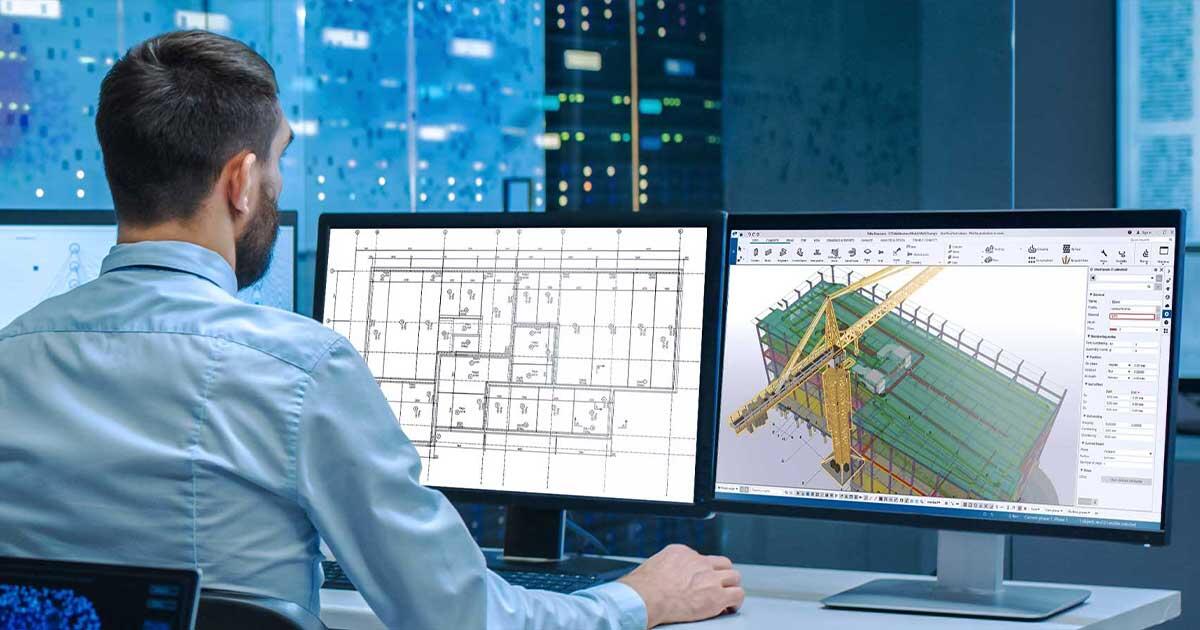Doesn't BIM feels similar to Playing a Game? Only with a few boring re-iterative actions & calculations until you know the super-mario effect!
 |
| Image Credit: Tekla Structures |
I started using a gaming mouse for my modelling works in Tekla. This was inspired by a video from CS Wilson Draws where he explains his setup for Tekla modelling.
Having extra buttons for a few most common tasks can be a real stress reliever or even a big player in the overall improvement of productivity. The mouse I used was Lenovo ideapad GAMING it has 4 additional buttons in comparison to the generally used mouse that has 2 buttons & a scroll button along with it.
Gaming mouse is generally used by gaming enthusiast and it has a very high performance as compared to the other commercially used mouse. You can say gaming is a more intense activity as compared to the general office works which do not involve so much of simultaneous or instantaneous inputs.
Here's how I've deployed my setup for Tekla Structures, to be specific this post will contain info on how I use the Gaming Mouse to my advantage. I feel that modelling buildings isn't much different to playing games such as Minecraft or even CS, typically BIM models look like animated game arenas.
So lets start with the hardware: Lenovo ideapad GAMING, you can find more details on the Amazon link here
This mouse has 4 extra buttons:
Buttons 1 & 2 will by default get you to forward and backward if tried in a web-browser. I haven't used this on any game so have no idea how it works in a game.
Buttons 3 & 4 are for the DPI, it is to change the sensitivity of the mouse. This is useful when you want to change the speed of the cursor. Just try pressing the + or - button until you feel comfortable by the way your mouse works. I typically change this when I'm working on some critical details and I find the pointer moving too quickly. There are a couple of videos on Youtube that explain the purpose of this DPI button.
Following is how I utilize the 2 extra buttons 1 & 2.
I use a free software called: X-Mouse Button Control and should be downloadable from this link here https://x-mouse-button-control.en.softonic.com/
Once you've installed the software, it is very easy to use it going ahead. In the following screenshot you can see I've kept customized buttons for the 2 extra button that I got in the mouse.
It gives you a lot of options to select from the drop down. I tried a couple of them but replacing the middle button function from the scroll button was a better way of working for me and I've kept it to work as a middle button instead of the default forward action.
In the initial days, I'd kept Button 4 to work as CRTL + C and Button 5 to work as CRTL + V. This way the entire copy paste work was done using the mouse itself with minimum inputs.
Now as I have been working on Tekla structures of quite a while, I've customized it to suit my requirement. I've kept Button 5 as Middle Click & Button 4 as Escape as these are the most common commands in Tekla. You need to press Middle Click to complete the command and Escape to interrupt a command.
There's option to set up the software to put different settings based on the application, like when Tekla is the active window it'll use these settings and when you're on Chrome it'll use the buttons to work as forward or backward strokes. As a personal choice I've just assigned it to work as a middle button and escape key as it works for most of my workflows.
The middle button allows me to Pan the model and when pressed in combination with CRTL it allows me to rotate/orbit around the model. While holding the mouse it does feel like you're actually grabbing the model when you pan it by pressing the button with your thumb instead of your index finger.
That's all, I've been grateful that I saw the video from CS Wilson and put this to workstation. I think now, I won't have anymore instances of broken scroll buttons due to the pressing and scrolling action on the same button.
Thanks for reading!
Here's the Ted Talk video about the super mario effect I mentioned in the start:

